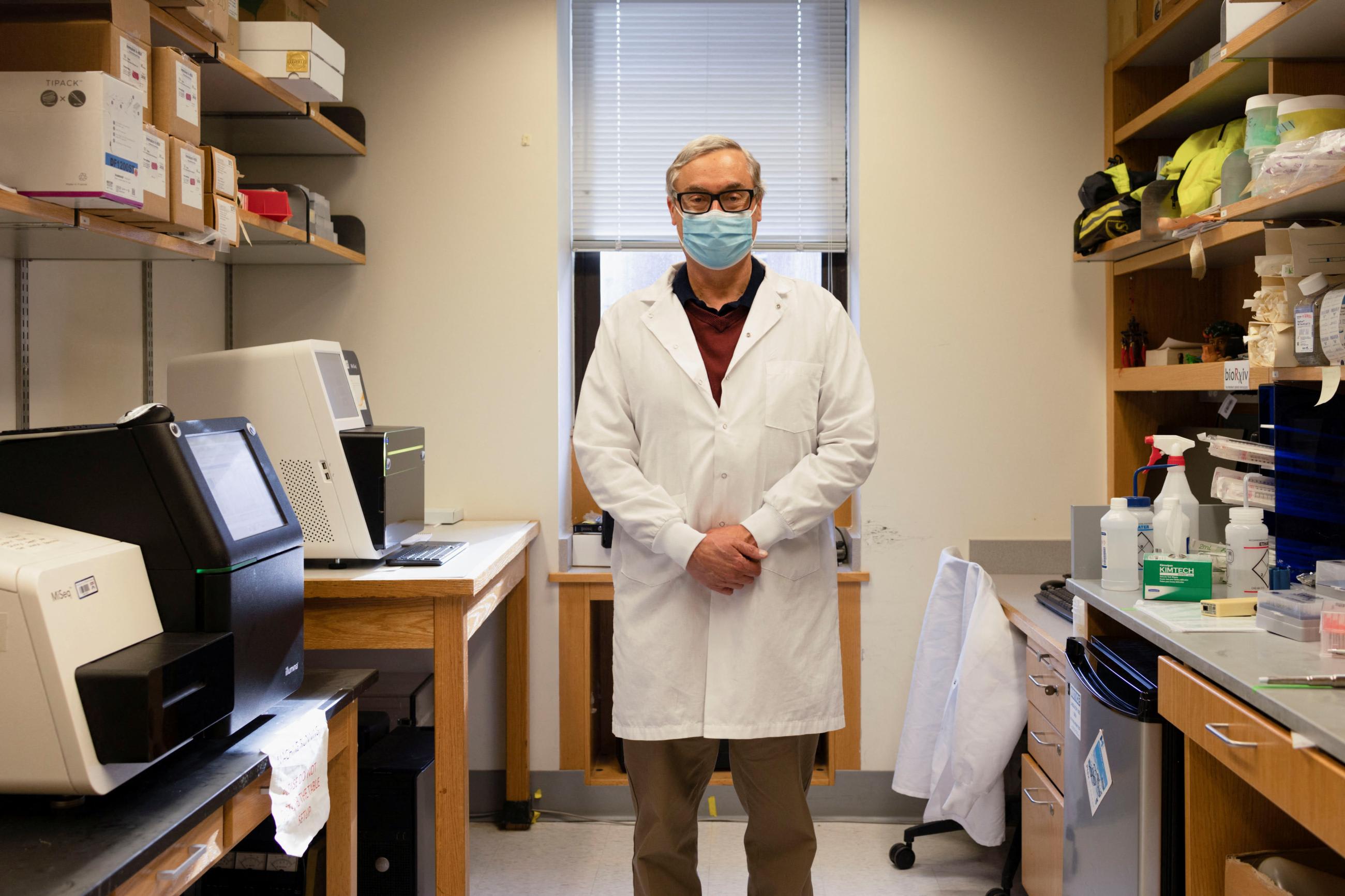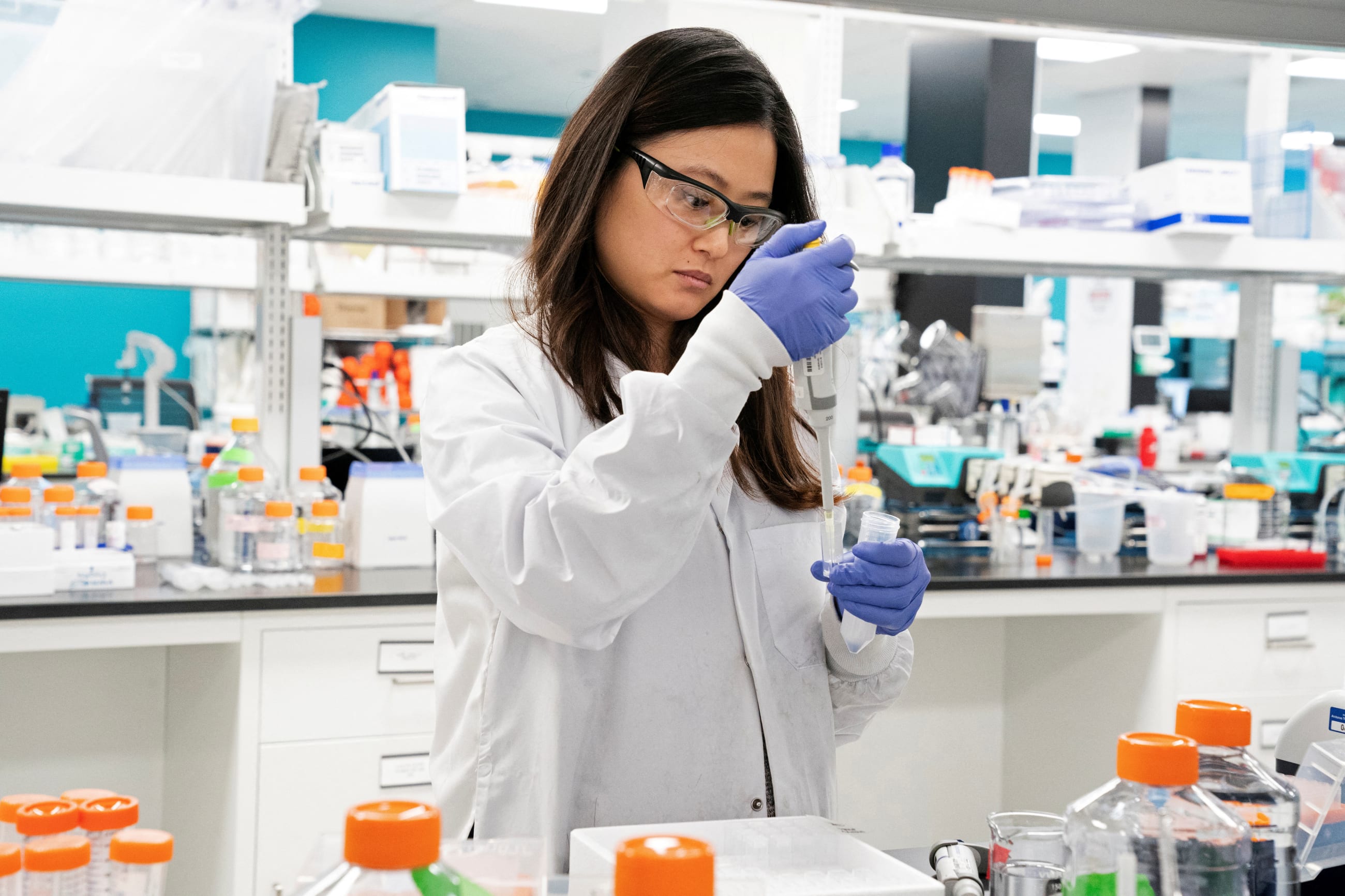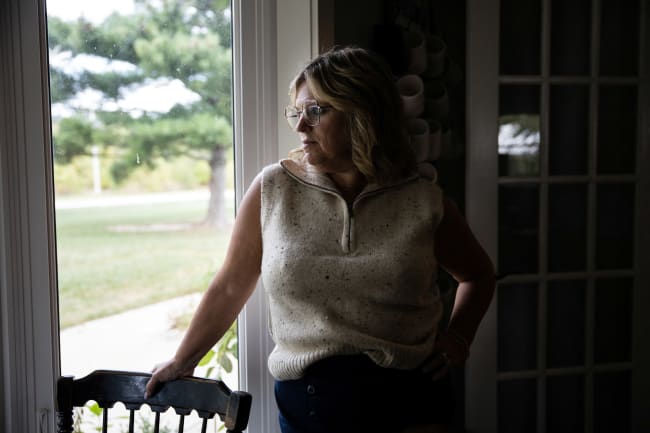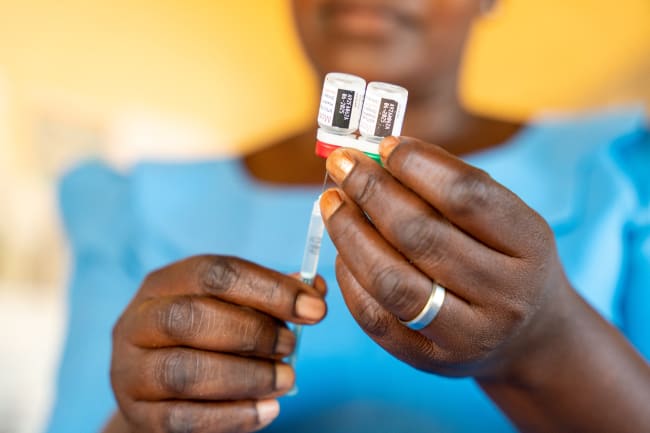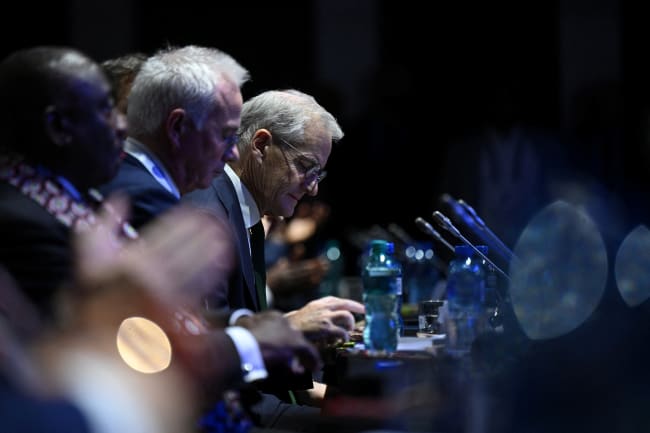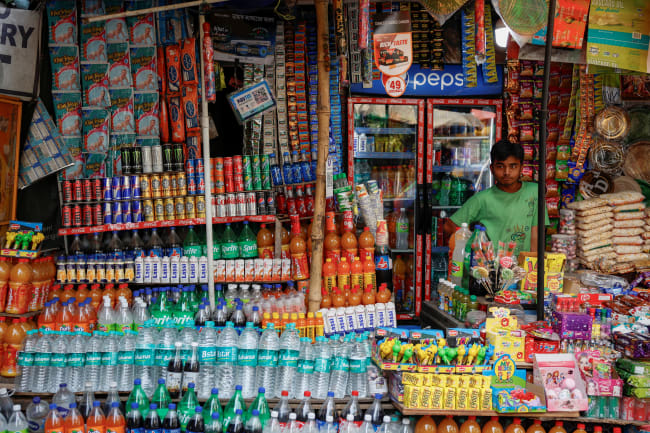Disease cure research in the United States—for cancer, for Alzheimer's disease, even for pediatric heart defects—has been stopped. Graduate school admission offers to train the next generation of U.S. scientists have been rescinded. Undergraduate research opportunities are canceled.
On May 13, a Senate committee minority staff report announced that, through first three months of 2025, the Donald Trump administration had effectively removed $2.7 billion from the National Institutes of Health (NIH). At least $739 million has been cut from the National Science Foundation.
These cuts arrive as a Senate bipartisan commission warns that China has caught up to the United States in biotechnology—an industry the commission states will power jobs, manufacturing, medicine, and national security in the twenty-first century. To avoid losing the race, they recommend increased investments in research and STEM (science, technology, engineering, and mathematics) education—the very areas now being slashed. Economists caution that these cuts will shrink U.S. gross domestic product (GDP) to the same extent as during the Great Depression.
This funding purge is happening in part because of a fictional, conspiratorial worldview: President Trump, Health and Human Services Secretary Robert F. Kennedy Jr., and Special Government Employee Elon Musk blame the U.S. scientific enterprise for the origins of SARS-CoV-2, the coronavirus responsible for COVID-19. They allege without evidence that an NIH subcontract to China's Wuhan Institute of Virology led to the virus leaking from a lab and that the inability to find proof of this theory is not that it may be incorrect but instead "evidence that NIH has grown too big and unfocused" [PDF] and "corrupt."
In mid-April, the White House redesigned COVID.gov, a government website formerly dedicated to provide public health advice and mail-order tests, to falsely allege that Anthony Fauci and the NIH (with help from the U.S. Agency for International Development) funded the creation of SARS-CoV-2 in the Wuhan Institute of Virology using so-called gain-of-function techniques, and a subsequent lab leak led to the pandemic.
In his first town hall with NIH employees, Director Jay Bhattacharya endorsed the view that NIH caused the deaths of more than 7 million people, including 1.2 million Americans. [Here's video of the town hall via CNN]. In early May, RFK Jr. claimed that Fauci has been creating bioweapons since 2001, a false statement that could motivate adversaries such as Russia not to believe that the United States unilaterally disarmed its offensive bioweapons program in 1969.
Unpacking Research on Natural Origins of COVID-19
Considerable evidence points to a natural spillover of SARS-CoV-2 from animals to people via a live animal market—just like what happened with SARS in 2002–2003, rendering unwarranted the certainty within the Trump administration that COVID-19 started as a lab leak. Of course, a lab leak theory has been considered, as has intentional genetic manipulation, the latter strongly dismissed by a U.S. government program designed to attribute disease origins.
A plausible lab leak scenario has not been put forward
Yet a lab leak theory can't explain why most early clinical cases of COVID-19 were associated with a live animal market more than 10 miles away from the lab, or why disease spread centered around the market. Nor can the theory support how two versions of the virus were present in early cases, only one of which went on to cause the pandemic.
Genetic diversity of the virus in early cases is most easily explained by an ongoing epidemic in animals and multiple people getting infected by different sick animals. If there was a single spillover (or single lab accident), you would not expect to see this genetic diversity. It remains unclear how a lab leak could have happened, given what is known: Did scientists go across town to the market with at least two different viral samples to infect animals about to be butchered, and from there the virus spilled over to people at the market? A plausible lab leak scenario has not been put forward.
A lab leak can't explain why viral genetic material was found in wildlife market stalls (and a hair-feather-removal machine for animals) as well as genetic material from creatures known to be susceptible. Evidence even indicates that within the market the animals that are the prime suspects for natural origins—greater hog badgers and raccoon dogs—were sick. A lab leak theory can't currently explain where SARS-CoV-2 actually came from if not from nature because SARS-CoV-2 could not be readily produced from any previously known virus.
The evidence to support a natural spillover isn't just scientific. China appears to blame the market for COVID-19, given that political leaders lost their jobs but scientists retained theirs. Their officials also tried to hide the presence of illegally trafficked animals at the market.
Gain of Function: Oversight and a Brief History
Lab leak proponents assert "dangerous" safety practices in China. Even if that were the case, it doesn't explain why a market would be the epicenter of SARS-CoV-2—and would be a good argument for U.S. scientists to work more closely with Chinese and other international scientists to promote safety practices. Certainly, more should be done to increase the safety of live animal markets.
As part of this year's lab leak push, President Trump issued an executive order in early May to ban what he and his surrogates believe caused the pandemic—"dangerous gain-of-function research" in the United States and in foreign labs supported by U.S. partnerships. Gain-of-function research [PDF] is an imprecise term but generally refers to research that could increase the pathogenicity or transmissibility of a pathogen.
The ban replaces guidance developed under President Joe Biden by the White House Office of Science and Technology Policy (OSTP). This policy was due to be implemented the day after Trump released the executive order—invalidating hundreds of hours of work by biosafety officers and scientists around the country.
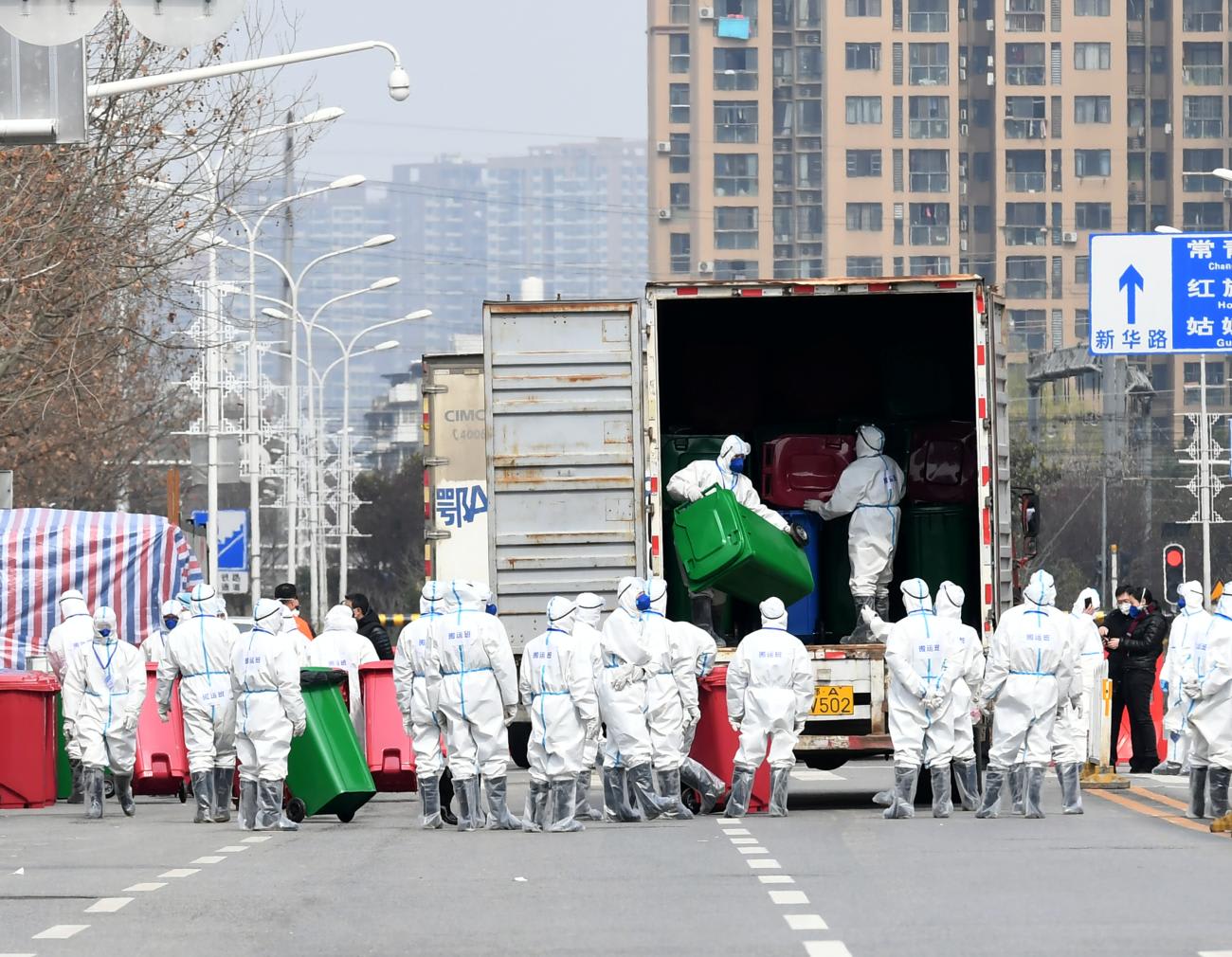
The guidance resulted from a contentious debate in 2023 over a different plan [PDF] for biosecurity oversight of research, developed by the National Advisory Board for Biosecurity (NSABB), then chaired by Gerry Parker, who now heads of Trump's Office for Pandemic Preparedness and Response. At the time, virologists warned that the NSABB plan would stop critical virology research, including vaccine development.
The gain-of-function executive order does that, too, but its broad terms could be used to stop a high school biology class. The executive order suspends research classified as gain of function for now, promising a fuller plan for oversight, tracking, and accountability in three months. The order's definitions, however, are unworkable and potentially applicable to a wide range of laboratory activities, including vaccine and monoclonal antibody development, or molecular cloning for bacteria, a foundational biological technique that has been used since the 1970s to produce insulin, engineer plants for better nutrition, and basic biology research.
Institutions that violate the executive order could lose federal funding for five years. Although the order could be selectively used to stop any number of scientific projects, it joins the funding cuts and abrupt cancelations of research projects as yet another way that science is grinding to a halt in the United States.
The original experiments published in 2012 labeled as gain of function were performed to determine whether H5N1 influenza was likely to be able to adapt to mammals and, if so, what genetic mutations made that possible. The scientists found that H5N1 mammalian transmission was indeed possible; they also predicted the mutations that have been seen in the ongoing outbreak in birds and mammals including sea lions, mink, cats, and dolphins. Initial concerns about the work [PDF] revolved around security (could H5N1 become a weapon?) and then safety (could it escape from containment?).
Policy discussions on subsequent research to probe what makes viruses more transmissible or pathogenic have centered on weighing risks versus benefits [PDF] of the experiments, and additional review by the Department of Health and Human Services including whether the research could be "reasonably anticipated" to lead to a more transmissible or pathogenic virus. Unfortunately, even though this practice makes sense rhetorically, these qualities are difficult to predict experimentally and research predictions are often wrong.
This dissonance creates a logical problem: The research oversight mechanism depends on the outcome of an experiment that typically can't be predicted. Introducing a genetic mutation in a coronavirus to better understand that gene's function typically makes it less effective as a pathogen—that is, it is a loss of function—but if the opposite occurred and it was not "reasonably anticipated," it could be perceived as a violation. Previous policies for the oversight of gain-of-function work have tried to thread a needle to allow needed work to understand viruses and develop vaccines to proceed. The new executive order demonstrates what happens if those nuances are removed: Everything gets subsumed in a ban.
U.S. scientists have a strict safety and security regime for work on dangerous viruses. They don't oppose oversight—but it is important to have a system that allows work to continue to understand, prevent, and defeat viruses such as SARS-CoV-2 or the flu, which has killed more children this year than any since 2009. Should infectious disease research be allowed to proceed in the United States, an oversight mechanism should be developed in collaboration with virologists to avoid the logical problem that scientists can't know what they might learn from an experiment without doing it.
Without Science, the United States Won't Be Ready
As the impact of Trump's executive orders is debated, the most outrageously dangerous gain-of-function experiment in the country right now is being allowed to continue with no oversight, surveillance, interventions, biosafety, or biosecurity protections. H5N1 avian influenza is circulating in dairy cows and migratory birds and occasionally spilling over to humans.
Person-to-person transmission is yet to occur—but if the virus adapts to humans and gains the mutations necessary to do so, it could generate a pandemic worse than COVID-19. Even though influenza has been under study for decades, no scientist can say which mutations are necessary for human-human transmission, and no one can say if or when human-human transmission will occur. However, allowing H5N1 to adapt to people is a losing strategy and more dangerous than any laboratory experiment, considering that the virus has already caused rare but occasionally severe human cases, including one death in the United States and four fatalities this calendar year in Cambodia. The United States has not reported a human H5N1 case in more than three months, but health experts worry that milder cases are going underreported because of cuts to public health surveillance and fear of deportation among migrant dairy workers.
Right now, the United States faces multiple infectious crises, such as measles and whooping cough—emergencies in which the country's evidence-based, scientific foundation needs to operate at full strength.
Other terrible diseases are just a plane ride away. People continue to get cancer, and promising treatments such as mRNA technology are on the horizon. This methodology saved millions of lives from COVID-19, but NIH Director Bhattacharya recently said that it is "a bad platform." We have serious competition from China for global leadership in biotechnology, and U.S. national and economic security will be diminished if we lose. Other countries—including Australia, Austria, Belgium, Canada, China, Denmark, France, Germany, Spain, and the United Kingdom—have launched initiatives to lure U.S. scientists away.
It's time to let go of the self-defeating fiction that science, not nature, caused the pandemic and to get serious about the reality that the next serious health or national security crisis could arrive tomorrow. Without science, the United States won't be ready, and the American people—and the world—will pay the price.
